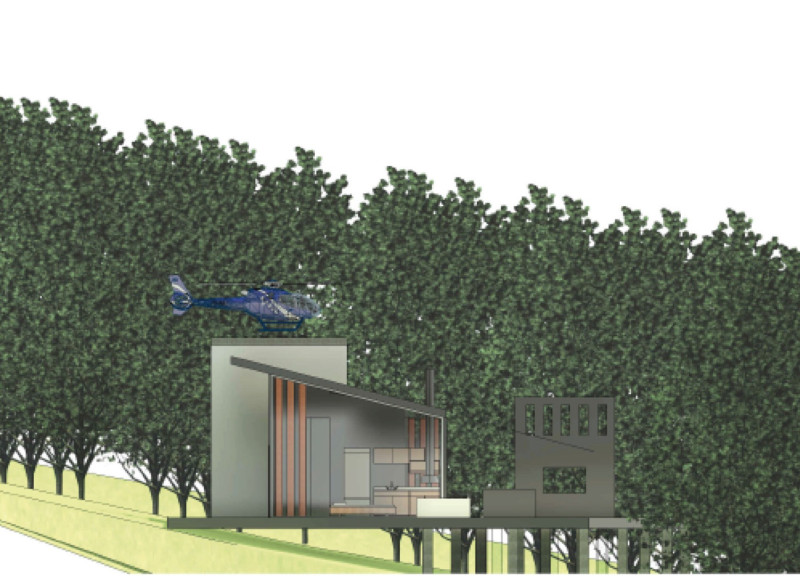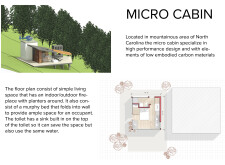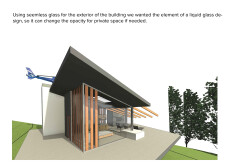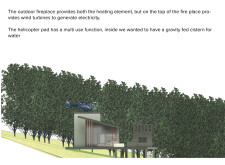5 key facts about this project
## Micro Cabin in North Carolina
### Overview
Situated in the mountainous region of North Carolina, the Micro Cabin exemplifies a modern approach to high-performance design and sustainable living. The intent is to create a compact yet efficient dwelling that aligns with the natural landscape while fostering a strong connection between occupants and their surroundings. The design incorporates both indoor and outdoor living areas, facilitating interaction with nature.
### Exterior Form and Materiality
The cabin's exterior features a contemporary aesthetic achieved through the use of natural materials. Key components include reclaimed wood, which provides structural integrity and aesthetic warmth; seamless glass that maximizes natural light and offers unobstructed views; concrete used for a robust foundation that encourages effective water drainage; and steel that supports the cabin's structural framework.
This deliberate selection of materials reflects a commitment to sustainability by minimizing waste and highlighting low-embodied carbon options. The inclusion of technologies such as wind turbines further enhances the cabin's eco-friendly profile, demonstrating an integrated approach to energy efficiency.
### Spatial Layout and Unique Features
The spatial strategy of the cabin emphasizes multi-functionality and efficient use of limited space. The living area, featuring an indoor/outdoor fireplace, serves as a central gathering point while promoting an engaging ecosystem through surrounding planters. The inclusion of a Murphy bed optimizes the space for various uses, and the innovative bathroom design incorporates a toilet with a built-in sink for enhanced water efficiency.
Distinctive features augment the cabin's practicality, such as an outdoor fireplace that supports renewable energy generation and a helicopter pad designed for versatile use. Additionally, a gravity-fed water cistern supports self-sufficiency in water management. The louvered façade not only provides shading but also creates dynamic light play on the cabin's surfaces, enhancing its architectural interest.






















































